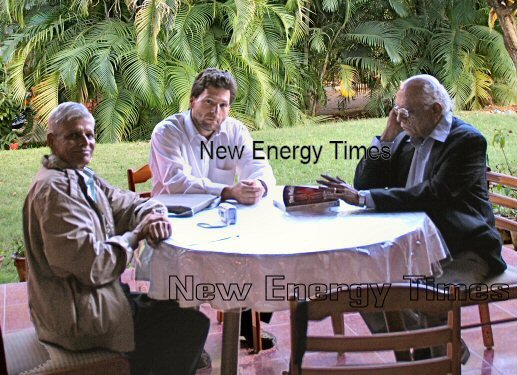(Deccan Chronicle)

India Moving Fast with Fast Breeder Reactors was last modified: October 19th, 2010 by sbkrivit
(Deccan Chronicle)

American Institute of Physics Cancels Marwan’s Cold Fusion Proceedings
http://newenergytimes.com/v2/news/2010/37/AIP-CancelsMarwansColdFusion.shtml
by Steven B. Krivit
Widom-Larsen Theory Paper Published
Allan Widom, Lewis Larsen and their collaborator, Yogendra Srivastava, have published another peer-reviewed paper on their ultra-low-momentum neutron-catalyzed theory of LENRs.
The paper came out electronically this weekend in Pramana – Journal of Physics, published by the Indian Academy of Sciences in collaboration with Indian National Science Academy and Indian Physics Association.
The paper is an overview of the Widom-Larsen theory and explains the relevance of their theory to low-energy nuclear reactions (LENRs), exploding wires and the solar corona.
A similar peer-reviewed paper published last year in the American Chemical Society Symposium Series: Low-Energy Nuclear Reactions and New Energy Technologies Sourcebook (Vol. 2).
The Pramana paper acknowledges “R. Chidambaram, N. Cabibbo and A. Roy, for inviting us to their institutions and for many interesting and useful remarks.”
Rajagopala Chidambaram is the principal scientific adviser to the government of India and the chairman of the scientific advisory committee to the cabinet. I chatted briefly with him about LENR in 2008 at the National Institute for Advanced Studies on the campus of the Indian Institute of Science in Bangalore.

Mahadeva Srinivasan, Steven B. Krivit and Rajagopala Chidambaram
Photo: M. McKubre
Indian LENR Conference Planned
LENR returns to India in February for the 16th International Conference on Condensed Matter. The conference takes place in Chennai under the direction of Mahadeva Srinivasan and Padmanabha Krishnagopala Iyengar. Chidambaram, Srinivasan and Iyengar were among a small team of nuclear researchers which developed the capacity and skill for India’s nuclear technology without much help from the West.
The conference is drawing widespread support from top Indian nuclear energy and research leaders.
Baldev Raj is director of the Indira Gandhi Centre for Atomic Research, president of the Kalpakkam chapter of the Indian Nuclear Society and vice president of the Materials Research Society of India.
“The curious puzzle in condensed matter nuclear science,” Raj wrote in a letter to the conference organizers, “is how loading of hydrogen or deuterium in a metallic Pd lattice with chemical energy inputs of the order of a few eV can trigger nuclear reactions generating energy of the order of several MeV.”
Other Indian individuals and agencies represented on the conference committees are Indian Atomic Energy Commission, Indian Physics Association, Indian Nuclear Society, National Institute for Advanced Studies, Indian Department of Science and Technology, Indian Defense Research and Development Organization, Bhabha Atomic Research Centre, Indian Institute of Science, Indian Society for Radiation Physics, Indian Centre for Fire, Explosive and Environment Safety, the former science advisor to prime minister Indira Gandhi and a former chairman of the Indian Atomic Energy Commission.
This New York Times article from today Moonlighting as a Conjurer of Chemicals talks about alchemical transmutations, dendrites and growth of metals.
This Journal of Environmental Monitoring article from last year talks about transmutations, growth of metals: A New Look at Low-Energy Nuclear Reaction Research.
This SPAWAR Pacific LENR experiment shows dendritic growth: 
Perhaps Newton was more brilliant than we give him credit for.
“Chris Christie, the governor of New Jersey, canceled America’s most important current public works project, the long-planned and much-needed second rail tunnel under the Hudson River.
…
“It was a destructive and incredibly foolish decision on multiple levels. But it shouldn’t have been all that surprising. We are no longer the nation that used to amaze the world with its visionary projects. We have become, instead, a nation whose politicians seem to compete over who can show the least vision, the least concern about the future and the greatest willingness to pander to short-term, narrow-minded selfishness.”
| © 2025 newenergytimes.net |